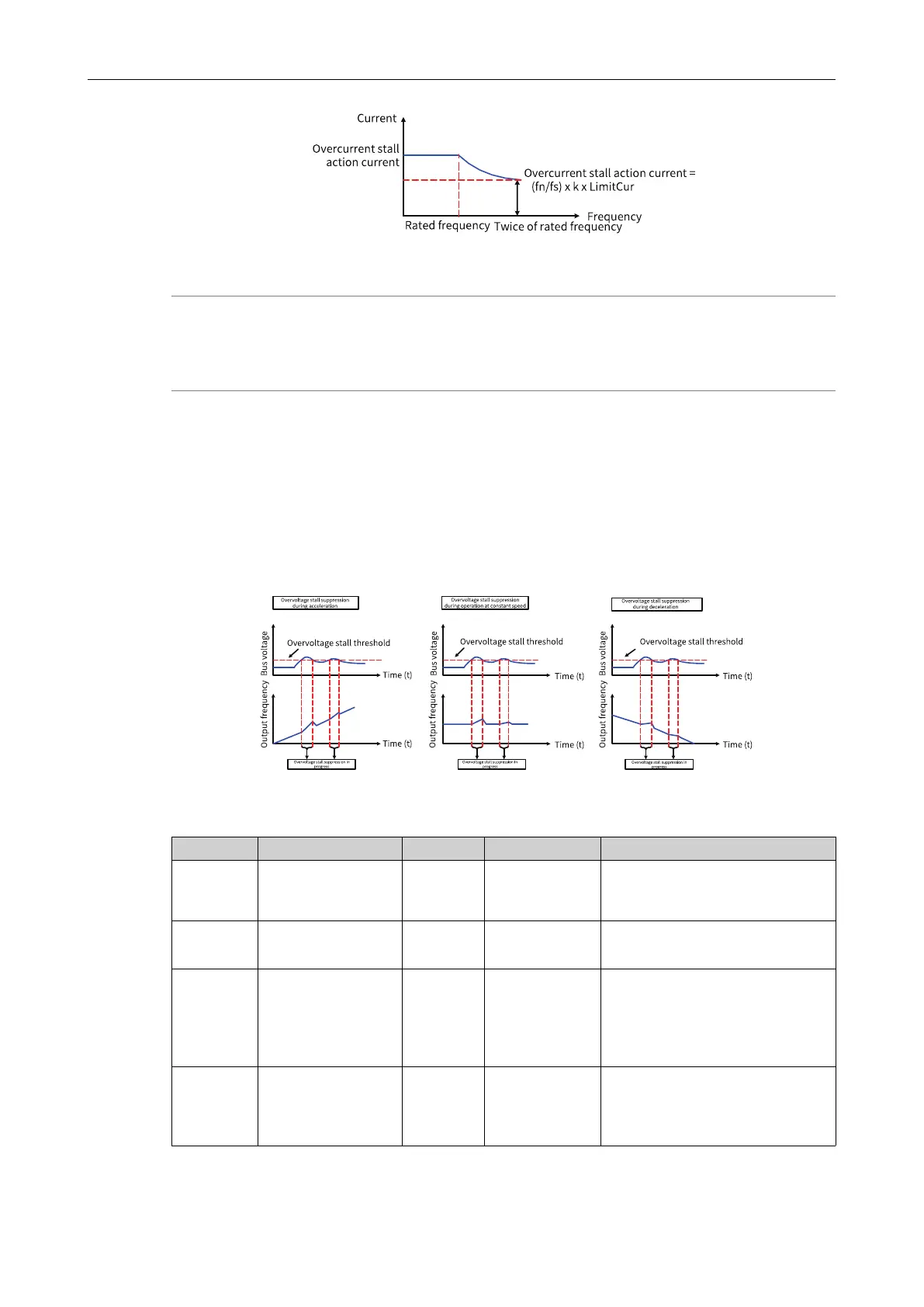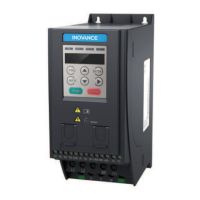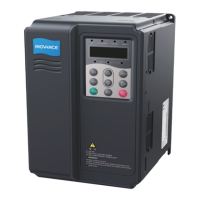Function Applications
-482-
Figure 4-39 Speed multiplying overcurrent stall action current
Note
For high-power motors with carrier frequency below 2 kHz, lower the overcurrent stall action current. Otherwise,
the pulse-by-pulse current limit function is enabled before the overcurrent stall prevention function as ripple cur-
rent increases, resulting in insufficient torque output.
4.4.3 Overvoltage Stall Suppression
When the bus voltage exceeds the overvoltage stall suppression action voltage (F3-22), the motor
becomes regenerative (motor speed > output frequency). In this case, overvoltage stall suppression is
triggered to prevent overvoltage trips by adjusting the output frequency to extend the deceleration
time. If the actual deceleration time cannot satisfy the requirement, increase the overexcitation gain as
appropriate.
Figure 4-40 Overvoltage stall suppression action
Para. No. Name
Default
Value Range Description
F3-22
V/f overvoltage stall
suppression action
voltage
770.0 V
200.0 V to 2000.0
V
The function of F3-22 is similar to that
of F9-04.
F3-23
V/f overvoltage stall
suppression
1
0: Disabled
1: Enabled
0: Disabled
1: Enabled (default)
F3-24
Frequency gain for V/f
overvoltage stall
suppression
30 0 to 100
Increasing F3-24 will improve the bus
voltage control effect, but the output
frequency will fluctuate. If the output
frequency fluctuates greatly, reduce
F3-24 as appropriate.
F3-25
Voltage gain for V/f
overvoltage stall
suppression
30 0 to 100
This parameter is used to suppress the
bus voltage. Increasing the parameter
value reduces the overshoot of the bus
voltage.

